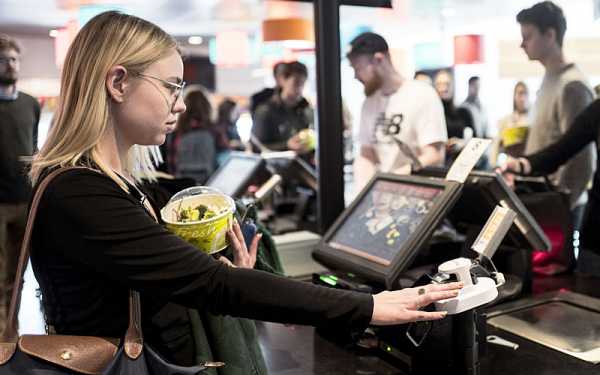By Lisa Smith – Account Manager, AURES UK
One thing about technology is, there’s never time for the grass to grow under your feet. Just as customer-facing businesses were getting to grips with contactless payments – first via debit and credit cards, now increasingly via smartphone apps and mobile wallets – something else comes along threatening to shake up the world of POS all over again.
And if you thought contactless was futuristic, it’s got nothing on biometric POS.
Biometrics is the use of unique physical attributes for identification and authentication purposes. It is already well established in a range of use cases, from fingerprint and retina scanners used in access control to biometric data stored on passports.
It takes no great leap of imagination to see how biometrics can be applied in payment processing. The big advantage is security. Used as an additional authentication measure in conjunction with other payment technologies, biometrics overcomes the risk of stolen cards or phones being used to make transactions – only the owner can authorise use.
There is also the potential for biometrics to create yet another brand-new payment architecture. India’s Aadhar Pay, for example, has pioneered a new system where you don’t have to present any card or device at point of sale to make a payment. Instead, you present your thumb on a special biometric fingerprint reader, which links directly to your account details to authorise the transaction.
Finger on the pulse
Much of the initial focus around biometric POS is on fingerprint authentication. The technology to digitally scan a fingerprint is already well established and relatively cheap and easy to build. There are various approaches coming to market. AURES, for example, partners with one of the leading innovators in the field, FingoPay, integrating our POS hardware with the company’s unique vein recognition finger scanners.
There are many reasons why various analysts predict that biometric POS will see considerable growth over the next five years. In developing countries like India, where the Aadhar system is linked to a national identification project, it is hoped that biometrics will help extend cashless payment options to poorer demographics which don’t have a great deal of access to traditional banking or payment cards.
For businesses the world over, one of the big attractions of biometrics is the potential to disintermediate card service providers, and therefore avoid their charges. If biometric authentication is linked directly to bank accounts, there is no need for a card provider to act as gatekeeper in authorising payments – the biometric data does it directly.
Juniper Research sees a strong correlation between biometrics and M-POS, with the potential evolution of the two in tandem to achieve a more fluid, agile approach to transaction processing. Juniper expects to see two million biometric M-POS terminals in use worldwide by 2023.
By then, biometric payment technology is likely to have evolved past fingerprints alone. With Apple now using facial recognition technology (Face ID) as standard for access control on its latest iPhones, it won’t be long before this finds a broader range of uses. We can imagine a scenario where payment terminals aren’t required at all – a customer’s phone connects via Bluetooth to the store’s EPOS system, and they scan their face on their own device via an app to authenticate and process a payment.
Similar approaches are well within the realms of possibility for voice recognition, too. It’s a brave new world, and an exciting time for POS.




